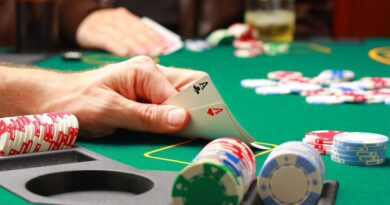How Does the Odds System for Horse Racing Betting Work?
Horse racing is a popular sport around the world, with thousands of races taking place each year. In addition to being a thrilling spectacle, horse racing also provides opportunities for betting, with millions of dollars being wagered on races every year. Betting on horse racing can be a fun and potentially profitable pastime, but it can also be confusing for beginners. One of the most important aspects of betting on horse racing is understanding the odds system, which is used to calculate the payout for winning bets. In this article, we’ll explore the odds system for horse racing and explain how it works.
Understanding Probability
Before diving into the odds system, it’s important to understand probability, which is the likelihood of a particular outcome occurring. In سایت شرط بندی اسب سواری, the probability of a horse winning a race is affected by a number of factors, including the horse’s past performance, the track conditions, the jockey, and the trainer. Bookmakers use this information to calculate the probability of each horse winning a race, which is then used to set the odds.
Understanding Odds
Odds represent the payout for a winning bet, and they are expressed in different formats depending on the country and the bookmaker. In the UK and Ireland, odds are typically expressed as fractions, while in the United States and Canada, odds are expressed as decimals. Regardless of the format, odds represent the payout for a winning bet, and they are based on the probability of a particular outcome occurring.
For example, let’s say there is a horse called “Thunderbolt” running in a race, and the bookmakers have calculated that Thunderbolt has a 25% chance of winning the race. The odds for Thunderbolt winning might be expressed as 3/1 in the UK or +300 in the US. This means that if you bet $1 on Thunderbolt to win and Thunderbolt wins, you would receive a payout of $4 in the UK or $4 in the US. The payout is calculated by multiplying the stake by the odds, so $1 x 3/1 = $4 in the UK or $1 x 300/100 = $4 in the US.
In general, the higher the odds, the less likely the bookmaker thinks the outcome is to occur. For example, if a horse has odds of 10/1 to win a race, the bookmaker thinks the horse has a 9.1% chance of winning. Conversely, if a horse has odds of 1/5 to win a race, the bookmaker thinks the horse has an 83.3% chance of winning.
Diferent Types of Bets
There are several different types of bets that you can place on a horse race, each with its own set of odds. Here are some of the most common types of bets:
Win Bet: A win bet is a bet on a horse to win the شرط بندی اسب دوانی. The odds for a win bet are typically the highest of all the bet types because it is the most difficult to predict. A win bet is often expressed as a fraction or decimal, depending on the country.
Place Bet: A place bet is a bet on a horse to finish in the top two, three, or four places, depending on the number of horses in the race. The odds for a place bet are typically lower than for a win bet because it is easier to predict a horse finishing in the top few places.
Conclusion
Each Way Bet: An each way bet is a combination of a win bet and a place bet. The bet is divided in half, with one half going towards the win bet and the other half going towards the place bet. If the horse wins the race, both halves of the bet win. If the horse finishes in the top few places, only



